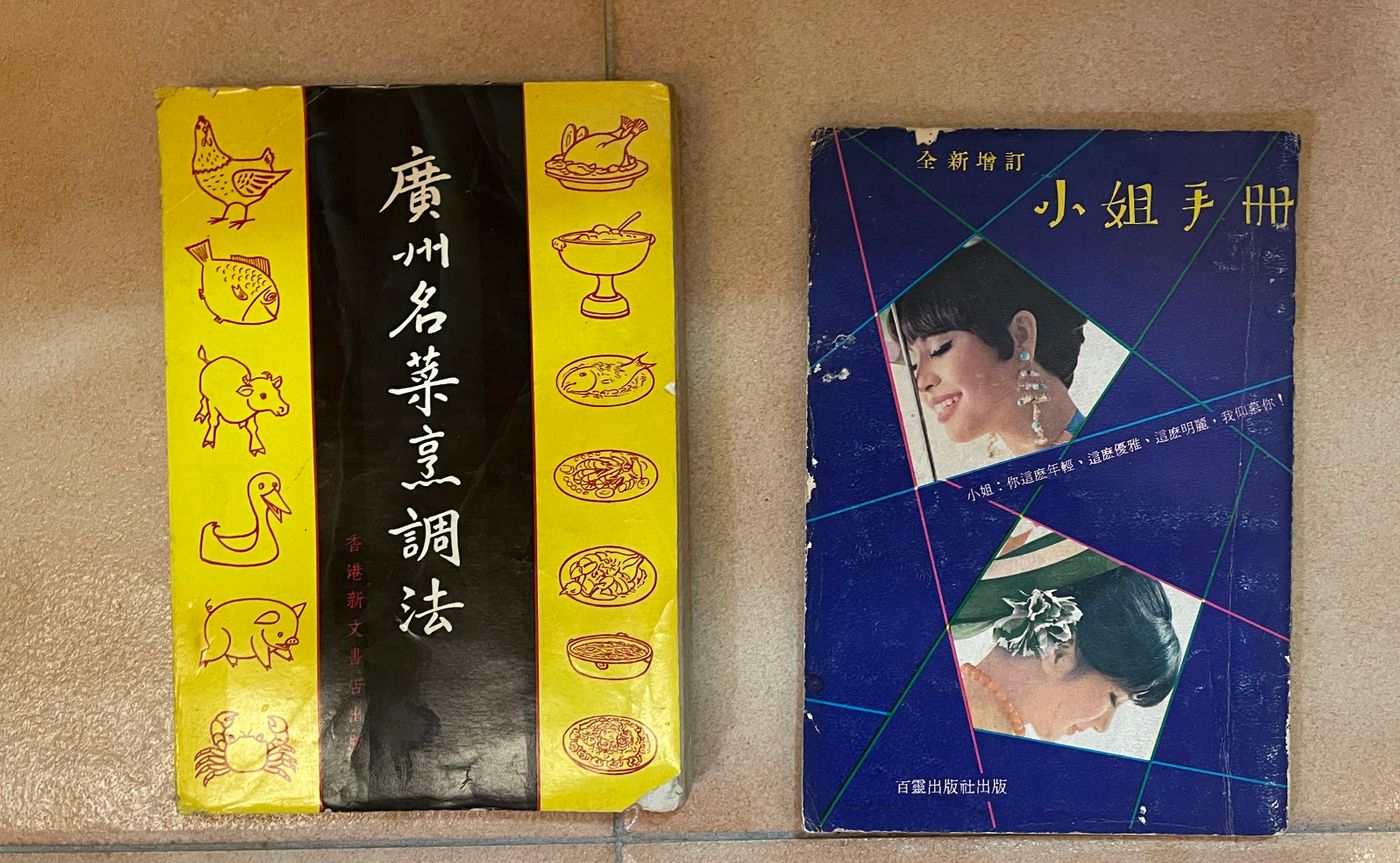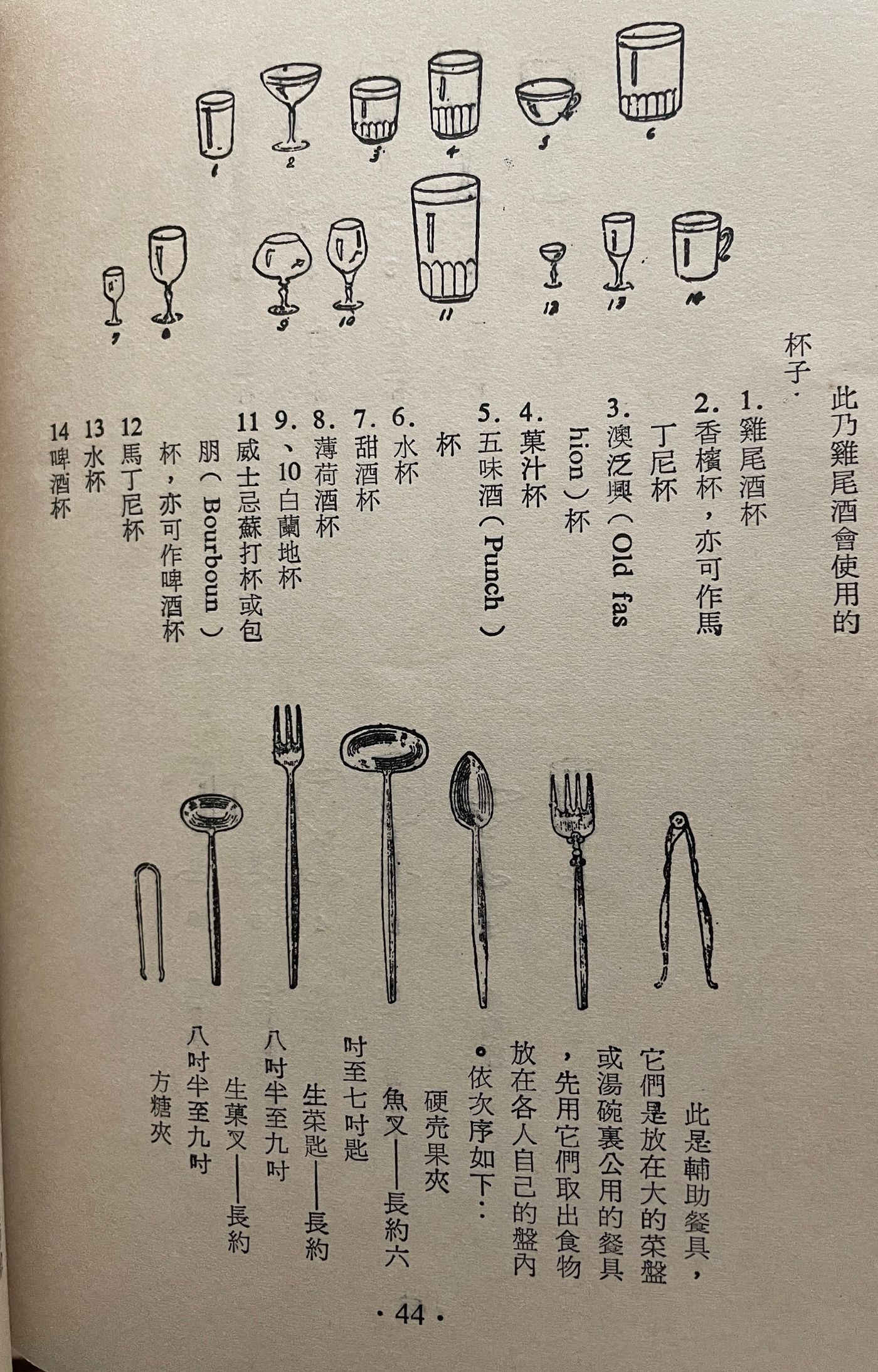old book (1)
Today I took a friend to Qifenyi Bookstore@Southeast Building. I wanted to buy a new book, but accidentally bought some old books, which were published in the 1960s and 1970s.
I asked the store manager why there were these two old books. It turned out that the deputy store manager bought them back, but the books were too old. She was afraid of hand marks, so she sold them at a fair price. Of course, these two books, which were originally priced at HK$2 and HK$4, were bought back at HK$40, which can be said to be "expensive", but the content of the books made me think it was worth it.
Let me introduce the first book: "Guangzhou Famous Cuisine Cooking Method", published by Hong Kong New Bookstore. The book, which the deputy store manager bought for HK$120, was sold for HK$40. The first chapter of this book teaches the basic cooking methods of Cantonese cuisine: frying, deep-frying, stir-frying, braising, stewing, buttoning, simmering, roasting, roasting, marinating, stewing, stewing, stuffing, steaming, soup, soaking, dipping, There are 37 kinds in total, including grilled, seared, smoked, rolled, sauced, slipped, slipped, simmered, simmered, retorted, wrapped, badly, drunk, Sichuan, floated, frozen, simmered, roasted and paste. There are explanations for each cooking method, and they are explained in two or three lines. For example, it's like this:
(1) Frying method Put the bone meat on the dark soy sauce, fry it with oil, stir fry with ginger and spring onion, add a little soup, cook it slowly over low heat, take back the original juice and serve it with straw mushroom or Bamboo shoots, oyster sauce.
[Example] 1. Raw chicken ingredients: one light chicken (about four taels per pound), one tael of straw mushrooms, five taels of main dish, five taels of red dates, two pieces of ginger slices, five taels of Shaoxing wine, five taels of old soy sauce, Horseshoe powder is three dollars, and oyster sauce is one or two.
Method of preparation: Coat the chicken body with soy sauce, then fry it in oil, add a little wine and put the ingredients together, add a small amount of water, and cook with a tile for 15 minutes. (pages 12, 13)
In a modern cookbook, this text should be represented by several color pictures.
The second chapter is the cooking of famous dishes. Interestingly, the title of the book is clearly called Guangzhou Famous Cuisine, but it also includes dishes from other provinces, Hui cuisine, and northern dishes. Perhaps the publisher felt that it was not enough to introduce Cantonese cuisine only.
We all know that Guangzhou people can eat any kind of food, so in addition to poultry (ie chickens, ducks and geese), livestock (ie pigs, cattle, sheep), aquatic products, there are also wild game. Back then, bats, civet cats and monkeys were not included in the mountain delicacies, but human friends (i.e. cats, dogs, rabbits) were included and became dishes on the stage.
To avoid disturbing everyone, let’s introduce some dishes that everyone often eats. Each dish has a record of the seller and the owner. It is not known how many of these "sale shops" (presumably restaurants) still exist, but the main point is that these dishes are well-founded and taught to everyone without reservation. For example, blindly shredding chicken, record as follows:
Sale shop Banou tea room. Master Huang Zu.
Ingredients: One plump chicken item (about two and a half catties), an appropriate amount of soy sauce, a little chopped green onion, five dollars of Huai salt, and two small bowls of sweet and sour.
Preparation method: (1) After the fat chicken is slaughtered, cut off the chicken feet, spread the chicken inside and outside with soy sauce, and marinate for about two or three minutes. (2) Pick up chicken kidney and chicken liver with freshly rolled soy sauce. (3) Put the chicken in the wok and fry it slowly, fry both sides first, then fry the chicken breasts (when frying the chicken breasts, use a hook to open the stuffing a little to make it cooked quickly). After deep-frying, the meat can be dismantled and served with sweet, sour and salted salt. Eat chicken head and kidney liver first, then eat leg meat, and finally eat chicken wing bottom, breast meat and chicken tail. (page 41)
After reading it, I can only say that I know how to do it, but the actual "operation" is another matter. Maybe the chefs will take a look and understand.
Now that the evening market is gone, I have to enjoy it in my mind through these words for the time being.
~~~~~~~~~~~~
The other is the Practical Miss Handbook. At a glance, you can tell it is "Yono", because it must be "instructions". Open the catalogue, in addition to the basics such as social interaction, manners, clothing, makeup, hairstyle, etc., it also includes the relationship between men and women, weight loss, bodybuilding, and self-defense.
Let's take a look at "Girls' Charm in the 20th Century" in Chapter 1. The author said that he did an interesting survey from 337 men. When choosing girlfriends based on appearance, upbringing and virtue, the result was:
Appearance... 4 percent upbringing... 17 percent virtue... 74 percent (p. 3)
The author said, "Virtues are overwhelmed, and this is something that girls should pay attention to."
Oh really? I think the percentages of appearance and virtue should be reversed.
The author also mentioned that when girls get along with others, being too shy, too defensive, and too tricky in front of the opposite sex "will make men feel uncomfortable." In another article, "Women in Men's Minds", the author wrote "conditions", such as smiling, slender hands, charming voice, long soft hair, bright eyes, etc.
Seeing this, you will feel very "male vision", and you will think that the author of this book is male. Sorry, according to the records of the book, the editor is Ling Jiali. Perhaps at that time, "female vision" had to be matched with "male vision".
Of course, it's not one-sided "male vision". It has some chapters that increase knowledge, such as the types of tableware and wine glasses (Figure 2 and Figure 3), many of which I have never read. The other is self-defense. The book describes how to face perverts, such as inserting eyes, kicking five inches up and five inches down.
There are also some passages to share with friends that spark laughter. For example, in "Coping with Courtship and Proposal", the author teaches "Hong Kong girls" how to decline:
Look at the words of one of the United States President Washington, who proposed to Miss Mary Philip, and how the beautiful beauty rejected him:
"General Washington, I am very grateful that you are so fond of me. I cannot promise you because it is too late for us to meet, and my heart belongs to another man. I cannot please one heart and break the expecting heart!
"It's easy for someone as successful as you to find a better woman than me.
"Tonight, I have the greatest honor, but also very sad. I will always remember you, forever...forever."
When Washington heard this, he immediately stood up, bowed deeply to Miss Philip, wishing her a happy life, and then withdrew in disappointment. (page 10)
Searching the Internet, it is true that Washington once fell in love with Mary Philipse (Mary Philipse), but is this wording really what she said to Washington? I really don't know. But no matter what is true or false, if a man now hears a woman rejecting him like this, he should sweat.
For me, this book is not an "instruction manual", but a joke book: read and laugh.



Like my work? Don't forget to support and clap, let me know that you are with me on the road of creation. Keep this enthusiasm together!
